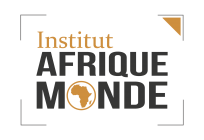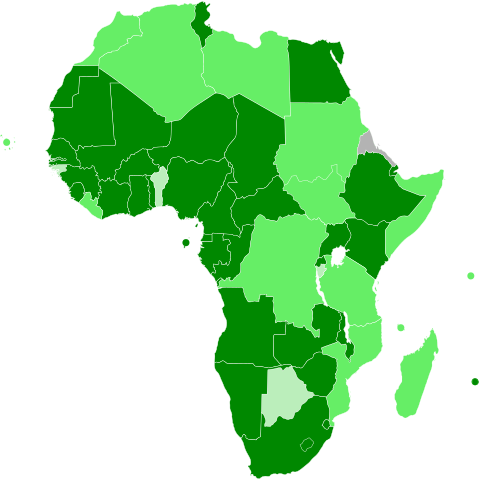Today, I dedicate this Letter No. 2 to the approach of religious pluralism by the members of this spiritual continent which, over the past fifty years or so, and more precisely the Second Vatican Council, has profoundly renewed its approach to inter-religious relations, both by its members themselves, who are living witnesses to it – from the bottom up in the hierarchy of the institution – and by the documents which seek to express its spirit in its many approaches.
The Letter succinctly presents the history and evolution of Christian tradition in the world, from its origins to the present day, and you will find attached the main excerpts from the address that Joseph Ratzinger, on behalf of the Catholic Holy See, delivered in Assisi on October 27, 2011 to his “Dear brothers and sisters, leaders and representatives of the churches and ecclesial communities and world religions, Dear Friends“.
Sometimes too accustomed to the Christian tradition that was taught to us in our childhood and formed our behaviour as faithful without too much criticism on our part, we are not always sensitive enough to what may have affected this two millenary history which, however, better understood, would be likely to help us to enter into a timely understanding of the challenges to be met in the 21st century in terms of religious pluralism.
If we remember, of course, that Jesus of Nazareth paid a high price for his commitments among his fellow believers under Roman occupation, that many of his disciples suffered the same fate and that it is indeed many “martyrs” who were, during the first three centuries, seeds of the Church (sanguis martyrum semen christianorum), it is worth remembering that from 313 onwards religious freedom was established in the empire by Emperor Constantine: the Milan Edict, known as the Edict of Tolerance, provides that everyone can “worship in his own way the divinity in heaven” and grants freedom of worship to all religions, allowing Christians to no longer have to worship the emperor as a god. The 17th centenary of this edict was celebrated very solemnly in 2013 in Milan, Rome and Istanbul (formerly Constantinople). And for 67 years, under this regime of distinction between the domains of “God” and Caesar, Christians, initially few in number, were able to multiply freely.
67 years later, in 380, as the advances of the “barbarians” threatened the empire, Emperor Theodosius proclaimed the so-called Thessaloniki edict prescribing that: All peoples must join in the faith transmitted to the Romans by the apostle Peter, that recognized by Pope Damascus and Peter, the Bishop of Alexandria, that is, the Holy Trinity of the Father, Son and Holy Spirit. The Trinitarian Catholic faith, as defined by the Council of Nicea, now triumphed over Arianism, which was to be condemned once again by the 1st Ecumenical Council of Constantinople (381). A former high-ranking official of the empire, now Bishop of Milan, Ambrose worked actively to unite the throne and the altar in order to safeguard the empire, evangelize the populations, and promote the growth of the Church: this was the beginning of the Caesar-Papist regime that governed Europe for 14 centuries – until 1795, when the French Revolution, in the name of freedom, abolished the alliance between the throne and the altar.
But during these fourteen centuries it will certainly no longer be religious freedom that will be guaranteed, but on the contrary Christianity that will be imposed on the whole of Europe from the Atlantic to the Urals. Clovis was one of the agents, among others, by being baptized in 499 after all a time of reluctance, and collectively baptizing 3000 of his men. Christianity becomes an imposed ideology, its content is determined by the Fathers of the Church and its authority is reinforced by the power of the Princes: the ideal to be achieved will be defined within the framework of a holistic society: a people, a king, a faith, a law, which is also Christian: Christian society, perfect society. And, whatever the difficulties that the Church
can actually meet to exercise its monopoly, it succeeds in doing so by excluding heretics: “As far as heretics are concerned, there are two things to consider. On their side, there is certainly a sin by which they have deserved not only to be separated from the Church by excommunication, but also to be separated from the world by death. It is indeed much more serious to corrupt the Faith that ensures the life of the soul than to falsify the currency that makes it possible to support temporal life. Therefore, if counterfeiters are immediately put to death in good justice by secular principles, much more so heretics, as soon as they are convinced of heresy, will they be able to be not only excommunicated but very rightly put to death. On the side of the Church, on the other hand, there is mercy for the conversion of those who are in error. Therefore, she does not condemn immediately…, but if the heretic still persists, the Church provides for the salvation of others by separating him from her with a sentence of excommunication, and later she abandons him to the secular judgment so that he may be taken from the world by death”. (Thomas Aquinas, Summa Theologica, 1266-1279). The Inquisition Court is organized for these purposes. Outside the Church, no salvation…
Christian religious imperialism will certainly always be contested over the centuries by those who are its agents, temporal princes – Germanic emperors (Henry IV), kings of France or England (Philip IV the Fair, Henry VIII) for example – or rebellious spirits among clerics (Luther, Calvin…). The Enlightenment questioned the fundamental charter of the covenant of “God” and Caesar as early as the 18th century, but it was not until the 20th century that the Church, particularly the Catholic Church, accepted it. In 1791, Pope Pius VI protested against the declaration of human rights and the civil constitution of the clergy, whose “effect was to annihilate the Catholic religion, and with it the obedience due to kings. It is in this view that we establish, as a human right in society, this absolute freedom which not only ensures the right not to be disturbed about one’s religious opinions, but which grants this license to think, to say, to write and even to have printed in matters of religion everything that the most deregulated imagination can suggest: monstrous right…” (Brief Quod aliquantum). Throughout the 19th century, the “rights of God” prevailed: it was not until John XXIII that human rights and obligations were recognized in 1963 (Pacem in terris), and that the Second Vatican Council adopted a declaration recognizing religious freedom in 1965: “The dignity of the human person is, in our time, the object of an ever-increasing consciousness; more and more people are claiming for man the possibility of acting by virtue of his own options and in complete freedom of responsibility; not under pressure of coercion, but guided by the conscience of his duty… This requirement of freedom in human society mainly concerns man’s spiritual goods, and, in the first place, the free exercise of religion in society.” (Dignitatis humanae).
This renewal of understanding of the civil liberties of citizens gives rise to another: with regard to religions other than Christian, Vatican II produced a final text, Nosta aetate, in December 1965: “In our time when the human race is becoming more closely united and relations between the various peoples are multiplying, the Church is examining more closely what its relations with non-Christian religions are… She examines here first what men have in common and what drives them to live their destiny together. For all peoples form one community; they have one origin, since God has made the whole human race dwell on the whole face of the earth; they also have one last end, God, whose providence, testimonies of goodness and designs of salvation extend to all, until the elect are gathered in the Holy City, whom the glory of God will illuminate and where all peoples will walk in His light. Men expect from the various religions the answer to the hidden enigmas of the human condition, which, yesterday as today, deeply shake the human heart: What is man ? What is the meaning and purpose of life ? What is good and what is sin? What is the origin and purpose of suffering ? What is the way to true happiness ? What is death, judgment and retribution after death? What is finally the last and ineffable mystery that embraces our existence, from which we derive our origin and towards which we tend ?“. In 1986 Karol Wojtyla (John Paul II) will bring together representatives of all religions in Assisi for the first time, and Joseph Ratzinger (Benedict XVI) will do so a second time in 2011 – see extracts from his speech in the appendix.
In the appendix, we will also read the recommendations made by Jorge Bergoglio (current Pope Francis) to the members of the Pontifical Council for Interreligious Dialogue, whose president has just been significantly appointed as a “camerliner” of the Church, responsible in particular for ensuring the interim after the death or resignation of the Pope…
Denis Maugenest
Download the weekly ticket of February 16th in pdf format.
Do you wish to continue the reflection with the IAM, anxious to contribute to the emergence of African civilization in the contemporary world, and to contribute to the work of the “Religious Pluralism” workshop? Contact us here.



